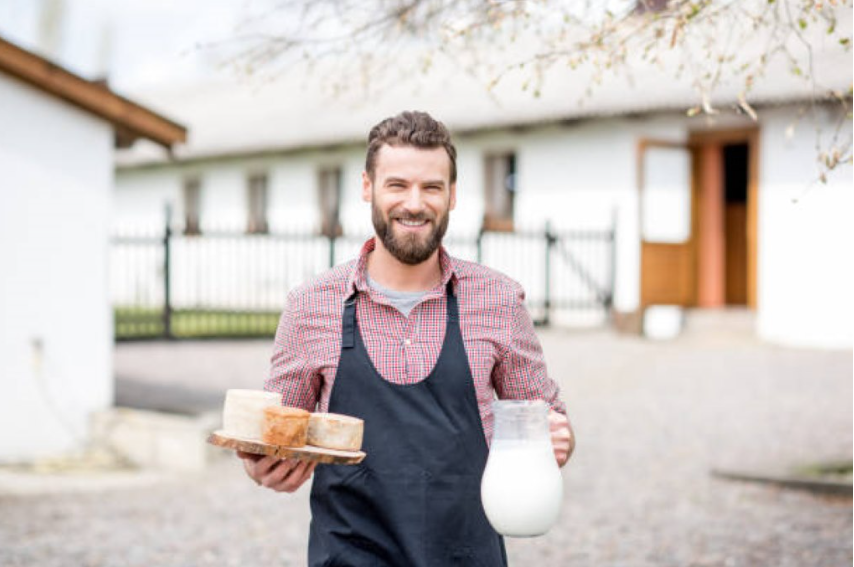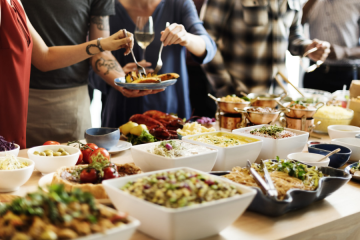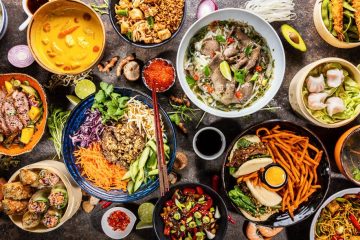Artisan cheese-making is an age-old craft that combines tradition, skill, and innovation to produce exquisite cheeses that tantalize the taste buds.
Behind every wheel of artisan cheese lies a meticulous process that starts with selecting the finest quality milk and culminates in the development of complex flavors through careful aging.
Gardners Wisconsin Cheese is one example of a celebrated brand that has earned a reputation for excellence in the cheese industry. Its artisanal cheeses showcase the rich flavors and distinctive characteristics that define true artisan cheese.
In this article, we will delve into the intricate steps involved in crafting artisan cheese, shedding light on the craftsmanship and dedication that go into each delectable creation.
Selection of High-Quality Milk
Artisan cheese-making begins with the fundamental ingredient: milk. The quality of milk significantly influences the flavor, texture, and overall character of the cheese.
Artisan cheese makers often prioritize sourcing milk from local farms with a focus on sustainable and humane practices. Whether it’s cow, goat, sheep, or buffalo milk, artisans look for freshness, purity, and richness in their dairy source.
Pasteurization and Culturing
After sourcing the milk, it undergoes pasteurization to eliminate harmful bacteria while preserving the beneficial microbes essential for cheese fermentation.
Alternatively, some artisans opt for raw milk cheese-making, relying on natural enzymes and bacteria for flavor development.
Following pasteurization, the milk is inoculated with starter cultures, such as Lactococcus lactis and Lactobacillus, which kickstart the fermentation process and contribute to the cheese’s flavor and aroma.
Coagulation and Curd Formation
Once the milk is cultured, rennet, a coagulating enzyme, is added to initiate coagulation.
This process causes the milk proteins (casein) to coalesce and form a gel-like substance known as curd. The curd is then cut into small pieces to release whey, a liquid byproduct, resulting in a curd-whey mixture.
Curd Treatment and Whey Removal
After cutting, the curds are gently stirred and heated to facilitate further whey expulsion.
The size and texture of the curds are carefully monitored to achieve the desired cheese consistency, whether it’s soft, semi-soft, semi-hard, or hard.
The whey, rich in proteins and nutrients, can be repurposed for other dairy products or animal feed, reflecting the artisan’s commitment to sustainability.
Molding and Pressing
Once the desired moisture content is achieved, the curds are transferred to molds where they are shaped and pressed to expel additional whey and consolidate the curd mass.
The pressing process varies depending on the cheese type and desired texture, ranging from light pressing for softer cheeses to heavy pressing for firmer varieties.
Salting and Flavor Infusion
Salt plays a crucial role in cheese-making, enhancing flavor, promoting rind formation, and inhibiting undesirable microbial growth.
Artisans employ various salting methods, including dry salting, brining, and surface salting, to impart flavor and preserve the cheese. Additionally, herbs, spices, or other flavorings may be added during salting to create unique and distinctive cheese varieties.
Aging and Flavor Development
Aging is where the magic truly happens in artisan cheese-making.
The cheeses are carefully stored in temperature and humidity-controlled environments, such as cheese caves or aging rooms, where they undergo biochemical transformations that impart depth, complexity, and character to the final product.
During aging, natural molds and bacteria develop on the cheese’s surface, contributing to its flavor profile and creating distinctive rinds. Depending on the cheese type, aging can last from a few weeks to several years, allowing flavors to evolve and mature over time.
Summarizing
Crafting artisan cheese is a labor of love that demands patience, skill, and a deep understanding of the cheese-making process. From selecting high-quality milk to nurturing the cheese through aging, artisans imbue each wheel with their passion and expertise, resulting in a diverse array of cheeses that captivate the senses. As consumers increasingly seek out authentic and artisanal products, the timeless art of cheese-making continues to thrive, showcasing the beauty of tradition and craftsmanship in every delicious bite.




